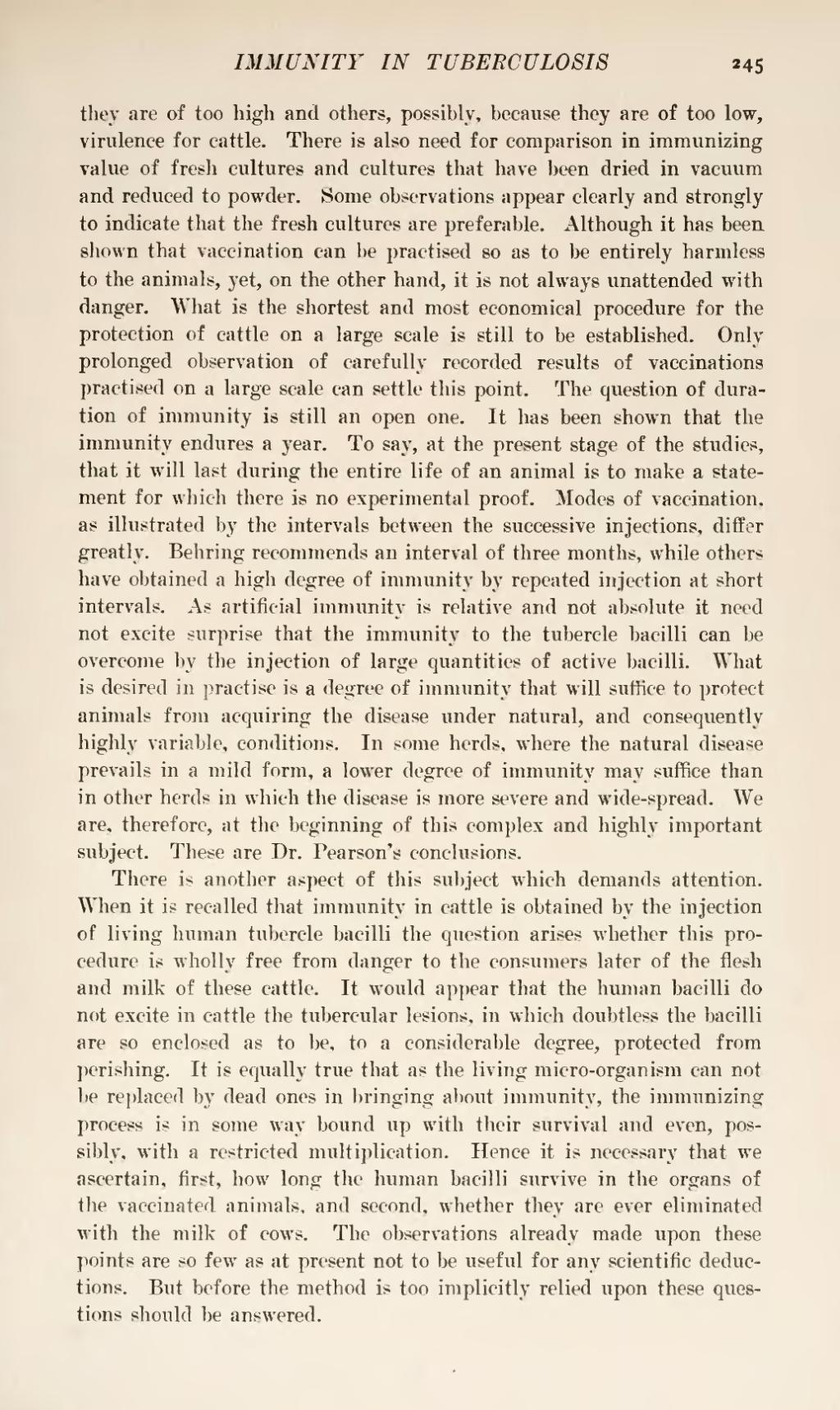they are of too high and others, possibly, because they are of too low, virulence for cattle. There is also need for comparison in immunizing value of fresh cultures and cultures that have been dried in vacuum and reduced to powder. Some observations appear clearly and strongly to indicate that the fresh cultures are preferable. Although it has been shown that vaccination can be practised so as to be entirely harmless to the animals, yet, on the other hand, it is not always unattended with danger. What is the shortest and most economical procedure for the protection of cattle on a large scale is still to be established. Only prolonged observation of carefully recorded results of vaccinations practised on a large scale can settle this point. The question of duration of immunity is still an open one. It has been shown that the immunity endures a year. To say, at the present stage of the studies, that it will last during the entire life of an animal is to make a statement for which there is no experimental proof. Modes of vaccination, as illustrated by the intervals between the successive injections, differ greatly. Behring recommends an interval of three months, while others have obtained a high degree of immunity by repeated injection at short intervals. As artificial immunity is relative and not absolute it need not excite surprise that the immunity to the tubercle bacilli can be overcome by the injection of large quantities of active bacilli. What is desired in practise is a degree of immunity that will suffice to protect animals from acquiring the disease under natural, and consequently highly variable, conditions. In some herds, where the natural disease prevails in a mild form, a lower degree of immunity may suffice than in other herds in which the disease is more severe and wide-spread. We are, therefore, at the beginning of this complex and highly important subject. These are Dr. Pearson's conclusions.
There is another aspect of this subject which demands attention. When it is recalled that immunity in cattle is obtained by the injection of living human tubercle bacilli the question arises whether this procedure is wholly free from danger to the consumers later of the flesh and milk of these cattle. It would appear that the human bacilli do not excite in cattle the tubercular lesions, in which doubtless the bacilli are so enclosed as to be, to a considerable degree, protected from perishing. It is equally true that as the living micro-organism can not be replaced by dead ones in bringing about immunity, the immunizing process is in some way bound up with their survival and even, possibly, with a restricted multiplication. Hence it is necessary that we ascertain, first, how long the human bacilli survive in the organs of the vaccinated animals, and second, whether they are ever eliminated with the milk of cows. The observations already made upon these points are so few as at present not to be useful for any scientific deductions. But before the method is too implicitly relied upon these questions should be answered.
